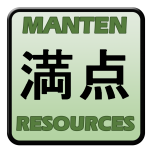Being a student is difficult. Many of us may have forgotten what it feels like now we spend our days on the other side of the desk. Learning makes us vulnerable and most of us are not sufficiently comfortable with the inevitable errors and failures that accompany progress.
High school students are even more vulnerable. They are in the midst of a physical and emotional transformation that make it difficult to hear and take on advice – particularly from adults. They are incredibly judgemental of themselves and are surrounded by a world where anyone can “comment” on virtually anything. No wonder they are paranoid about making mistakes in class.
Some take the self-sabotaging highway to avoid the vulnerability. Student A yesterday informed me they had spent all weekend playing computer games and were tired today as a result – today being the first day of their 2-week exam period. The fact that they chose to tell me this was not meant as an insult but rather a justification to themselves as to why they were about to perform poorly. They know the behaviour is not going to lead them to success but in their minds, it does have the benefit of shielding them from the anxiety of putting your best out there for judgement.
Student B in my class is the complete opposite. They have developed a thicker skin against the pain of feedback by putting themselves out there in every single class task. They never skip a task even if it is optional or challenging and they apply my feedback to subsequent tasks.
Teaching Student A and Student B reminds me of what it is like to be a parent. You can have two children raised by the same parents in the same emotional and economic environment, but the children may end up very different. As teachers, all our students may not experience the same level of success in our courses despite our best efforts.
Students cannot control what will be in the assessment or the grade they will receive. They cannot even control their mindset on the day, the level of anxiety they feel or what may be happening at home in the lead-up to the task. What they can control though is what they choose to learn from the experience, and this is where we can help them the most.
Share how to prepare
Many students genuinely have a limited idea of how to prepare for a test. Marie Kondo talks about how parents assume children know how to clean-up their room and as a result no one explicitly teaches them how to do it efficiently and effectively. The same could be said for study.
For speaking exams, writing sample answers is a good start because if they have never created those sentences before, they are unlikely to spontaneously come up with fabulous answers during the test. Although the exam requires the ability to answer unseen questions, in the early days providing set questions to build upon is a great start.
The next step is detailed feedback about what they did well and where they can improve. This needs to be explicit though eg Great use of connectives and conjunctions to link ideas such as the te form, でも、そして、それから、てから. I like to use the single point rubric feedback scale to do this.
A vital final step is then what you have the students do with that feedback. For example, you could make them select 5 questions they could have answered better, draft new responses to those questions and after feedback from you on the written redraft, record in pairs the 5 questions. This has the benefit of helping the student who is simply asking the questions, be exposed to how others are responding and the type of vocabulary and grammar they are favouring.
For more passive sections such as listening and reading, you can focus the post-assessment task on reflection. These ideas are then collated by the teacher into checklists lists under the headings what I planned to do, what I did, what I think will be a successful strategy next time. The teacher should go through with the class these strategies explicitly and elicit from students the pros and cons of each strategy.
And finally, don’t forget to learn from the experience as well. What does the performance of each student in the assessment tell you about their learning? How can you embed further regular review and practice in class for these weaker areas? One benefit of online learning has been the ability to use breakout rooms to specifically pair students to work on differentiated tasks and jump between the rooms as needed. The students will help you if the technology is an issue – another opportunity to demonstrate a growth mindset to them!
Jblog 4 Year 12 Resources including workbook tasks, sound files and google forms are now available. Email jblog1help@gmail.com to order these or the sample Year 12 assessment tasks.
